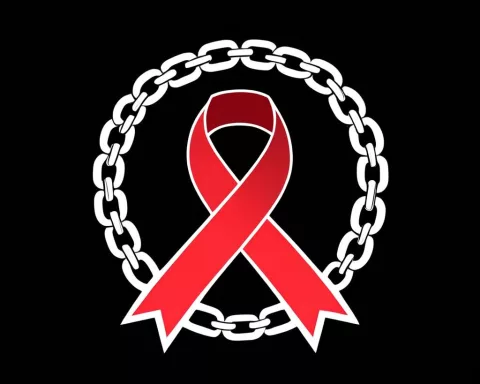South Africa is facing a tough energy crisis, with power cuts called load shedding hitting families and businesses hard. Minister Kgosientsho Ramokgopa recently apologized for these blackouts, expressing hope for a better future. While some people appreciated his honesty, others doubted that quick fixes would work, given the long history of power problems. The government is now working on big changes to improve the energy system, promising to explore new technologies and involve the public in finding solutions. With collaboration and creativity, South Africa aims to turn its energy woes into a success story.
What caused South Africa’s recent energy crisis and how is the government addressing it?
The recent energy crisis in South Africa, highlighted by Minister Kgosientsho Ramokgopa’s apology, is driven by severe load shedding due to Eskom’s implementation of Stage 6 electricity cuts. The government aims to eradicate load shedding through comprehensive reforms, innovative technologies, and public engagement.
Ministerial Apology and Public Reaction
In the dynamic realm of South Africa’s energy sector, the recent apology by Kgosientsho Ramokgopa, the Minister of Electricity and Energy, has stirred up a myriad of responses. His statement came on the heels of a renewed cycle of load shedding, triggered by Eskom’s implementation of Stage 6 electricity cuts. This marked a significant return of severe disruptions after nearly a year, exacerbated by multiple unit failures within Eskom, the nation’s primary electricity provider. Ramokgopa aimed to mitigate the impact of these disruptions on homes, businesses, and industries, revealing the intricate ties between the citizenry, governmental entities, and the complex web of electricity provision.
Ramokgopa addressed the nation with sincerity, acknowledging the pervasive inconvenience caused by load shedding. His words resonated with a populace accustomed to the frustrations of rolling blackouts, which are employed to stave off the collapse of the electrical grid. Load shedding has become a staple issue, often seen as a reflection of broader systemic problems within South Africa’s energy infrastructure.
Public reaction on social media platforms such as X (formerly known as Twitter) highlighted a range of opinions, reflecting the diverse sentiments of the country’s populace. Some users, like @GodPenuel, expressed appreciation for the minister’s accountability, underscoring the value of leadership in recognizing shortcomings. This perspective emphasizes a desire for transparency and responsibility, qualities frequently perceived as absent in governmental communications.
Scepticism and Distrust: The Public’s Perspective
Conversely, a number of individuals viewed Ramokgopa’s apology with skepticism. Tweets from users such as @JerezFynn and @_Mkha_Lu2li pointed to a belief that load shedding is a deeply entrenched issue, resistant to apologies and quick fixes. This skepticism epitomizes a deep-rooted distrust in institutional promises, perhaps shaped by a history of unfulfilled assurances and temporary solutions.
The minister also commended the efforts of Eskom’s workforce, who were instrumental in quickly restoring power-generating units. This acknowledgment not only highlighted the expertise within Eskom but also painted a broader picture of resilience among South Africa’s workforce. Praise directed at Eskom Group CEO Dan Marokane and his team served as a testament to the relentless dedication required to maintain essential services amid enduring infrastructural challenges.
Ramokgopa’s vow to work towards eradicating load shedding altogether speaks to an ambitious goal—one that demands more than temporary measures. Achieving such a vision requires comprehensive reforms, akin to historical periods of resurgence and reimagining, such as the Renaissance. Transforming South Africa’s energy landscape involves addressing not only technical issues but also the socio-economic dimensions intertwined with energy policy and delivery.
The Multifaceted Nature of Load Shedding
Load shedding is more than a technical hurdle; it is a complex issue intertwined with economic growth, political stability, and social equity. Historical trends indicate that energy availability directly influences industrial productivity and quality of life. Therefore, the commitment to ending load shedding necessitates a holistic strategy, one that incorporates innovative technologies, sustainable practices, and an inclusive policy framework.
Additionally, the debate surrounding load shedding invites exploration of creative solutions and community engagement. This ongoing dialogue encourages a reassessment of energy consumption habits, the potential of renewable energy sources, and the role of both individual and collective efforts in energy conservation. The interplay between governmental action and public participation remains paramount, as societal cooperation is crucial for achieving meaningful and sustainable progress.
As South Africa continues to grapple with these challenges, the discourse on energy provision becomes a lens through which larger national and global conversations are viewed. Themes of accountability, innovation, and resilience echo across borders, reflecting a universal quest for sustainable and equitable energy solutions.
A Path Forward: Challenges and Opportunities
In conclusion, the diverse reactions to Minister Ramokgopa’s apology underscore the complexities within South Africa’s energy sector. This narrative reflects a blend of challenges and aspirations, capturing the delicate balance between acknowledging immediate issues and striving for enduring solutions. As the nation progresses, the involvement of both leaders and citizens will be crucial in crafting a future where load shedding is relegated to a historical footnote, rather than a persistent frustration. Through collective effort and innovative thinking, South Africa has the potential to transform its energy landscape, setting a precedent for resilience and sustainability in the face of adversity.
FAQ: Navigating South Africa’s Energy Crisis
What is causing the current energy crisis in South Africa?
The energy crisis in South Africa is primarily due to severe load shedding implemented by Eskom, the country’s main electricity provider. The situation has escalated to Stage 6 electricity cuts, which have severely disrupted power supply to homes and businesses.
How is the South African government planning to address the energy crisis?
The government, led by Minister Kgosientsho Ramokgopa, aims to eradicate load shedding through comprehensive reforms, the adoption of innovative technologies, and increased public engagement in developing solutions.
What was Minister Ramokgopa’s recent apology about?
Minister Ramokgopa apologized to the nation for the inconveniences caused by load shedding, acknowledging the frustrations faced by citizens and businesses. His apology reflects a need for accountability and transparency in addressing the persistent energy challenges in South Africa.
How has the public reacted to the minister’s apology?
Public reactions have been mixed. While some expressed appreciation for Ramokgopa’s honesty and accountability, others were skeptical, feeling that the issues of load shedding are deeply entrenched and resistant to quick fixes or apologies.
What role does Eskom play in the current energy situation?
Eskom is central to South Africa’s electricity supply and has faced multiple unit failures leading to the recent load shedding. The minister praised Eskom’s workforce for their efforts in restoring power-generating units, recognizing their dedication in the face of ongoing challenges.
What does the future hold for South Africa’s energy landscape?
The future of South Africa’s energy landscape hinges on collaborative efforts between the government and citizens. By integrating innovative practices, promoting renewable energy, and encouraging public participation, South Africa strives to create a sustainable and resilient energy system that moves beyond the challenges of load shedding.












